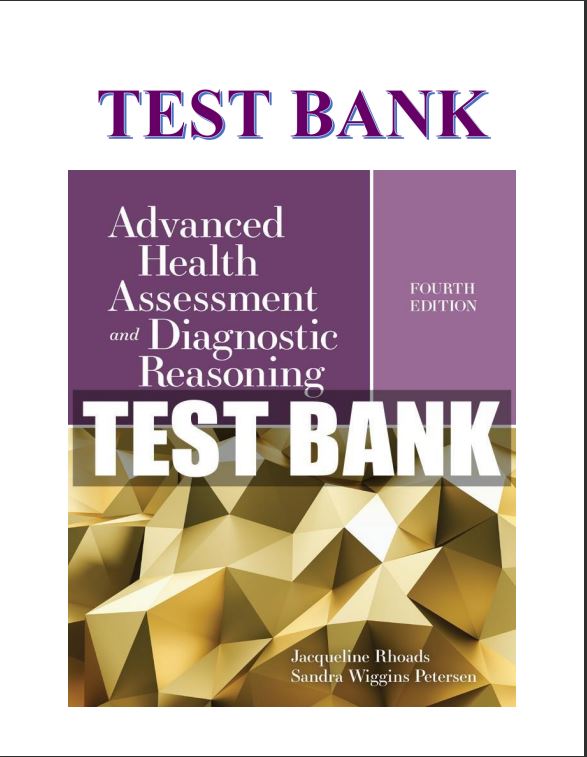Advanced Health Assessment and Diagnostic Reasoning Fourth Edition TEST BANK
Advanced Health Assessment and Diagnostic Reasoning Fourth Edition TEST BANK
Couldn't load pickup availability
Which of the following is an example of subjective data that may be collected during a health
assessment?
A) Height and weight
B) A patient’s recall of his or her past health conditions
C) Results from an abdominal CT scan
D) Complete blood count
Ans: B
Complexity: Moderate
Ahead: Functions of the Interview and Health History
Subject: Chapter 1
Title: Interview and History-Taking Strategies
Taxonomy: Application
2. Which of the following is true regarding the data taken in a health history?
A) Most health history data are objective and measurable.
B) Objective data are error-free, quantifiable data.
C) Subjective data, being inherently less accurate, are of less value than objective data.
D) A successful individualized plan of care must incorporate subjective data.
Ans: D
Complexity: Difficult
Ahead: Functions of the Interview and Health History
Subject: Chapter 1
Title: Interview and History-Taking Strategies
Taxonomy: Analysis
3. What do Coulehan and Block define as “listening to the total communication . . . and letting the patient
know that you are really hearing”?
A) Cultural competence
B) Patience
C) Empathy
D) Top-tier communication
Test Bank for Advanced Health Assessment and Diagnostic Reasoning 4th Edition Rhoads (Test
Bank PDF Files)
Ans: C
Complexity: Moderate
Ahead: Interviewing
Subject: Chapter 1
Title: Interview and History-Taking Strategies
Taxonomy: Recall
4. The provider is preparing to take a health history for a new patient. He takes the patient to a private
room and asks the patient to don a hospital gown. After stepping outside to give the patient sufficient time
to change, he then comes back in and asks permission to conduct the history. He sits next to the patient
at eye level, discreetly observes the patient for any sensory deficits, and asks the patient if he may take
brief notes of the conversation. During the conversation, he gives the patient time to answer questions
fully. He makes sure that his questions do not contain technical terms and quietly observes the patient’s
nonverbal behaviors throughout. Which mistake did the provider make?
A) He should have allowed the patient to remain fully clothed in their own clothing for their comfort.
B) He should not have omitted technical terminology. Patients like having a chance to learn.
C) He should have seated himself slightly above eye level to give the patient nonverbal reassurance of
his experience and professionalism.
D) He should have asked explicitly about the nonverbal changes he was noticing in order to gain a
deeper level of understanding of the patient’s current condition.
Ans: A
Complexity: Difficult
Ahead: Taking a Health History
Subject: Chapter 1
Title: Interview and History-Taking Strategies
Taxonomy: Analysis
GRADESLAB.COM
5. Which of the following is true of both comprehensive and focused health histories?
A) They both include identifying data.
B) They both include a social history.
C) They both include a family history.
D) They are both conducted in emergency situations.
Ans: A
Complexity: Moderate
Ahead: Taking a Health History
Subject: Chapter 1
Title: Interview and History-Taking Strategies
Taxonomy: Application
Share

